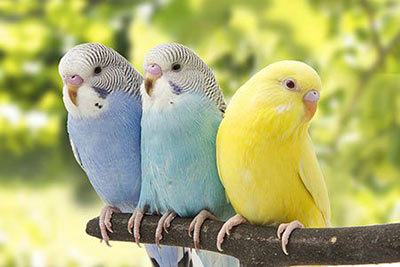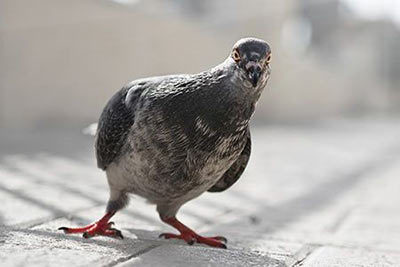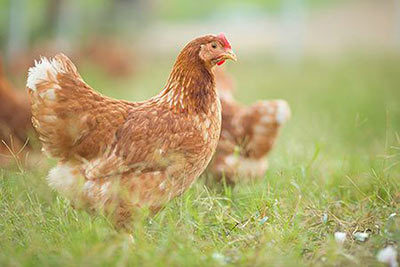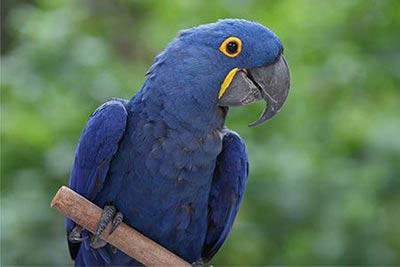Hyacinth Macaw
Hyacinth Macaw / Blue Macaw Facts
| Size | Up to 3.2 ft (1 m) |
| Speed | Up to 34 mph (55 km/h) |
| Weight | 3.3-3.7 lb (1.5–1.7 kg) |
| Lifespan | 40-50 years |
| Food | Nuts, fruit |
| Predators | Egg thieves: crows, toucans, skunks |
| Habitat | Brazil, Bolivia |
| Order | Parrots |
| Family | True parrots |
| Scientific name | Anodorhynchus hyacinthinus |
| Characteristics | Biggest parrot, blue plumage |
Main Characteristics
The blue macaw is a large parrot with a striking, bright blue colored plumage. There are only four species in the blue macaw family: the Hyacinth macaw, the Lear's macaw, the Glaucous macaw and the Guadeloupe amazon. Sadly, the Glaucous macaw and the Guadeloupe amazon are extinct already. The best-known species is the hyacinth macaw, which is often just called blue macaw.
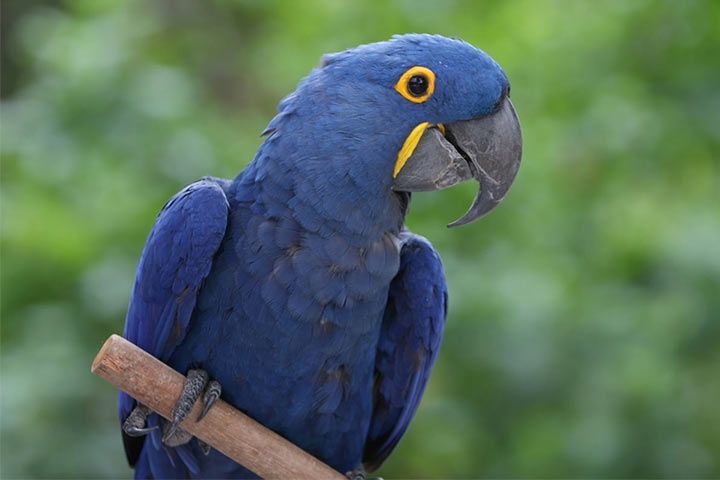
Anatomy and Appearance
Size and Weight
With 3.2 feet (1 meter), the blue macaw is the tallest macaw, but not the heaviest. It only weighs 3.5 pounds (1.6 kg), while the flightless kakapo reaches 6.6 to 8.8 pounds (3-4 kg).
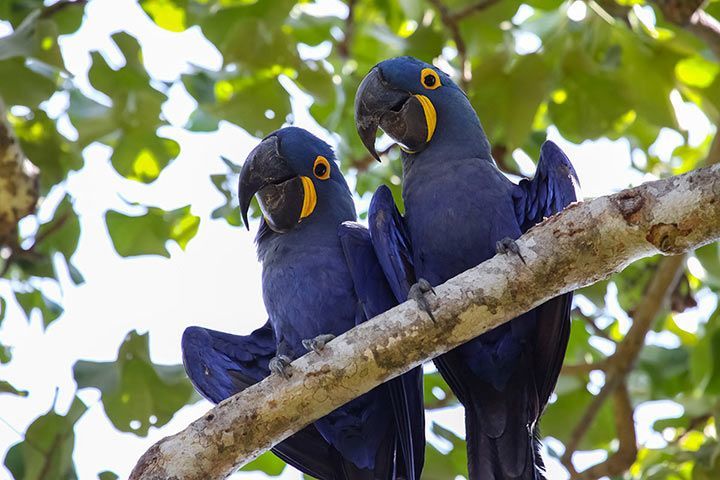
Behavior
They Are Gentle
Blue macaws are known for their patient, gentle, and good-tempered manner. They are also called “gentle giants”.
They Love Hang Upside Down
Even though blue macaws are rather tall and heavy, they hang on branches with their heads down in order to reach their favorite food.
Intelligence
They Use Tools
There are situations in the life of a blue macaw in which its strong beak proves useless. Then the birds often use tools in order to break nuts – for example a wedge-shaped piece of wood, which helps them to cleave the nut in two. Before they do this, they wrap the nut into a leave, so that it cannot roll away. Only few animals actually use tools. This is seen as a sign of higher intelligence.
Senses and Abilities
Strength
Its beak duts steel! Ok, this might be a little exaggerated, but when a blue macaw cuts a nut in two, the edges are as clean as if the bird had used a steel blade. Also, the bite force of the blue macaw is quite impressive: 550 pounds (250 kg). This is enough to cut a broomstick in half. But most of the time the bird prefers macadamia nuts and coconuts instead.
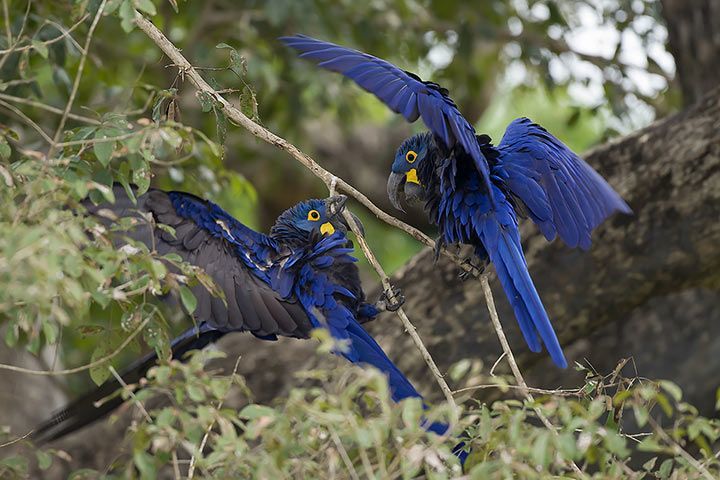
Enemies and Threats
The blue macaw is an endangered species. It loses more and more of its habitat because many forests are cleared for cattle farming or agriculture. Its beautiful plumage is used by locals to manufacture jewelry or sell it to tourists. The blue macaw is also a popular pet and therefore often removed from its accustomed environment. In Germany, blue macaws can only be kept as pets if you have a special permit.
Reproduction
Blue macaws stay together for their entire lives and mostly breed once a year. The female lays one or two eggs. The young birds hatch after about 29 days. After six months they are ready to live on their own.

- Find Out More:
- Animal Intelligence
- 16 Smartest Animals in the World
- Watch Now on animalfunfacts.net:
 The Strongest Animals in the World
The Strongest Animals in the World















